The construction industry is constantly evolving, and staying up to date with the latest trends is essential for construction companies, especially for home builders, modular builders, and remodelers with small to medium-sized businesses. Embracing technology can...
Revolutionizing Modular Construction: The Use of Shipping Containers
Modular construction has been around for decades and has become increasingly popular due to its efficiency, speed, and cost-effectiveness. However, traditional modular construction materials such as wood and steel are not always the most durable, sustainable, or customizable options. That’s where shipping containers come in. These sturdy and versatile structures have been repurposed for a wide range of applications, including homes, hotels, schools, and emergency shelters. In this blog post, we’ll explore the history, advantages, challenges, and future of using shipping containers for modular construction. We’ll also showcase some inspiring examples of shipping container projects that have transformed the world of architecture and design. Get ready to be inspired by the endless possibilities of shipping container modular construction.

The History of Shipping Containers
The use of shipping containers can be traced back to the late 1700s when wooden boxes were used for transporting goods. However, it wasn’t until the mid-20th century that the modern shipping container was born.
Origins of shipping containers
In 1956, American businessman Malcom McLean designed and patented the first intermodal shipping container. His design used a standard size and shape that could be easily loaded and unloaded from ships, trains, and trucks. This innovation revolutionized the shipping industry by making transportation more efficient, secure, and cost-effective.
The rise of containerization
McLean’s container design soon caught on and led to the widespread adoption of containerization. By the 1970s, most cargo was being shipped in containers, which led to the development of larger container ships and ports. Containerization also helped reduce the time and cost of shipping goods around the world, fueling global trade and commerce.
The evolution of shipping container design
Over the years, shipping containers (also called Conex Containers) have undergone various design improvements to enhance their durability, safety, and sustainability. Today, most Conex containers are made of steel and come in standard sizes of 20 or 40 feet in length.
As the popularity of shipping containers grew, their potential for other uses beyond transportation was also realized. This led to the use of containers for modular construction.
Advantages of Repurposed Shipping Containers for Modular Construction
Shipping containers offer numerous advantages as a building material and for modular construction. Here are some of the main benefits:
Durability
Shipping containers are designed to withstand harsh ocean environments and heavy loads. They are made of durable steel and are built to last for decades. As a result, shipping container buildings are incredibly strong and can withstand extreme weather conditions, earthquakes, and other natural disasters.
Cost-Effectiveness
Shipping containers are a cost-effective material for modular construction. They are widely available, and their standard size and shape make transportation and handling relatively easy and inexpensive. Additionally, using storage containers can save on traditional building materials and construction costs.
Sustainability
Using shipping containers for modular construction is also an environmentally sustainable option. By repurposing containers that would otherwise go to waste, it reduces the demand for new building materials and the environmental impact of their production. Additionally, shipping or Conex container buildings can be designed to be energy-efficient and to incorporate renewable energy sources such as solar panels.
Customizability
Containers can be easily customized to fit a variety of architectural designs and purposes. They can be stacked, cut, and modified to create unique and innovative building designs. Additionally, they can be easily transported and relocated as needed.
Availability
Shipping containers are widely available and can be purchased or leased from a variety of sources. They can be found in ports, depots, and storage facilities around the world. This makes them an accessible and convenient material for modular construction projects.
Common Uses for Shipping Container Buildings
Shipping container modular construction has been used for a variety of purposes and applications. Here are some of the most common uses:
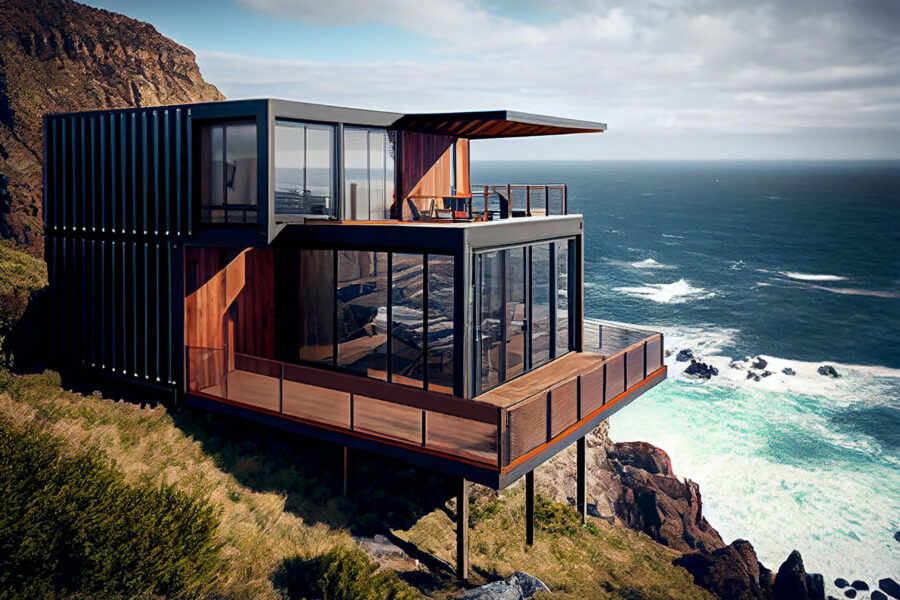
Housing
One of the most popular uses for shipping container construction is for housing. Containers can be repurposed into affordable and sustainable housing units, ranging from small cabins to multi-story apartment buildings. They can also be used for emergency housing in disaster-stricken areas. See more amazing container homes here.
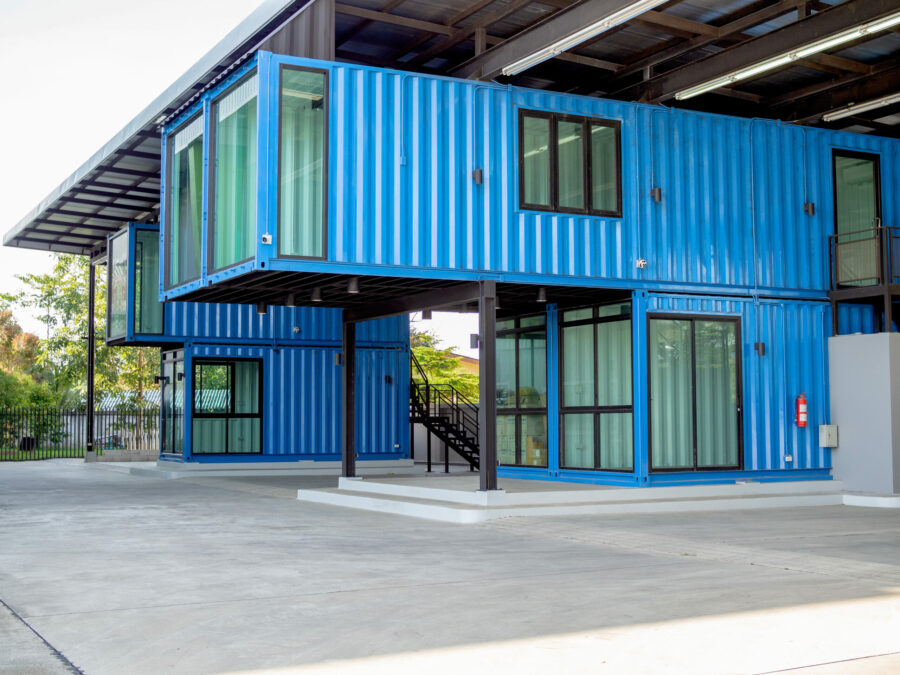
Offices
Shipping container modular construction is also a popular option for creating office spaces. Containers can be stacked and joined together to create larger office buildings or individual office units. The durable construction and customizability of shipping containers make them ideal for use as office spaces.
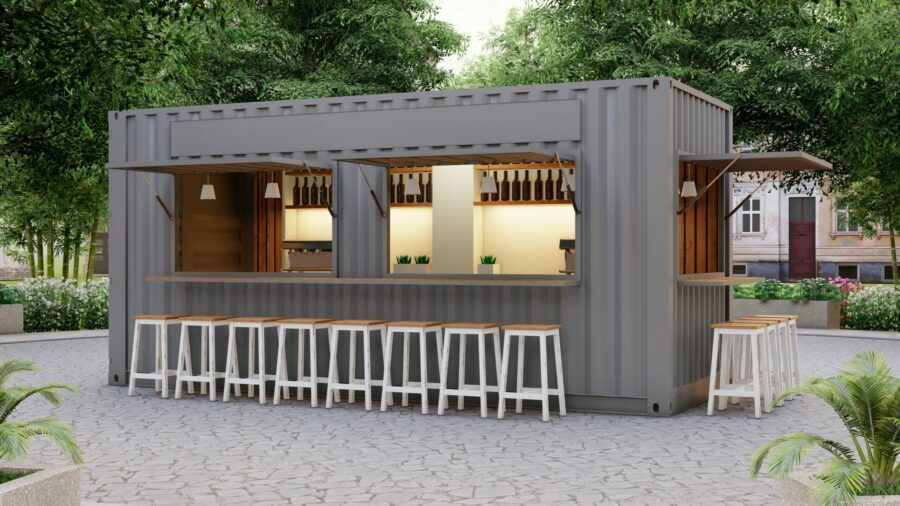
Retail Spaces
Shipping container modular construction is a creative and cost-effective way to create unique and eye-catching retail spaces. Containers can be easily modified and customized to create storefronts, pop-up shops, and even entire shopping centers.
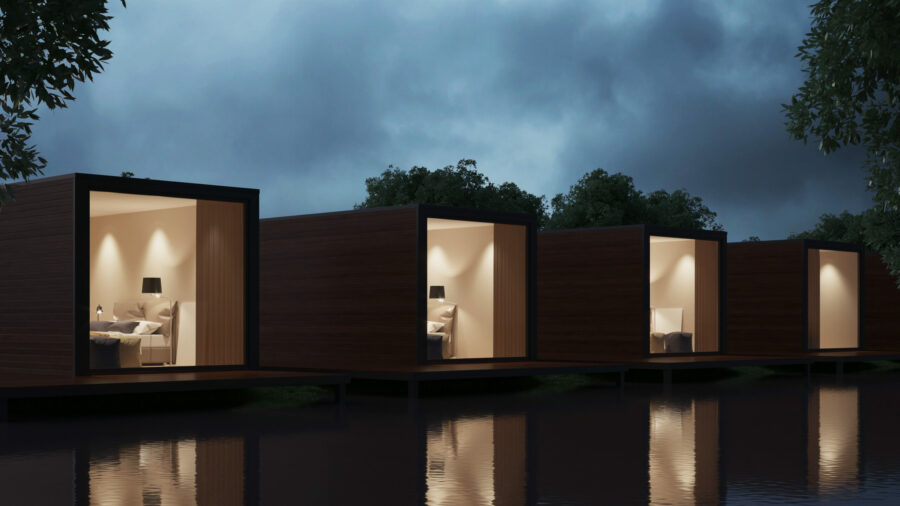
Hospitality
Shipping container modular construction is also being used in the hospitality industry. Containers can be converted into hotels, hostels, and even luxury resorts. The versatility and customizability of shipping container buildings allow for unique and innovative designs that can appeal to a wide range of travelers.
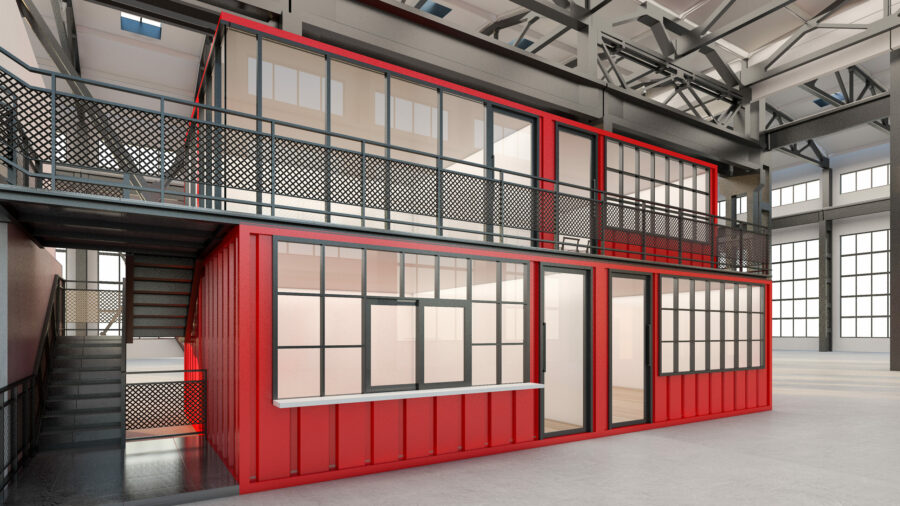
Workshops
Shipping container modular construction is also ideal for creating workshops and studios. Containers can be repurposed into workspaces for artists, craftsmen, and other professionals. The mobility of shipping container buildings also makes them ideal for use in temporary or mobile work settings.

Transportation
Shipping container modular construction is even used for transportation purposes. Containers can be converted into mobile offices, restrooms, and even ticketing booths for transportation companies. The mobility and durability of shipping container buildings make them ideal for use in the transportation industry.

Emergency and Disaster Relief
Cargo container modular construction can also be used for emergency and disaster relief housing. The containers can be quickly transported to disaster areas and used to provide temporary housing for those in need. The modular design allows for quick and efficient construction, making it an ideal option for emergency situations.
Challenges of Shipping Container Homes
While there are many advantages to using shipping containers for modular construction, there are also some challenges to consider. Here are some of the main challenges:
Insulation and Ventilation
Shipping containers are made of steel, which can conduct heat and cold. This means that without proper insulation and ventilation, they can become uncomfortably hot or cold. Additional insulation and ventilation systems must be added to shipping container buildings to ensure comfortable living or working conditions.
Permitting and Zoning
Shipping container architecture may face challenges with permitting and zoning regulations. Some local codes may prohibit the use of shipping containers for construction, or they may require additional permits and inspections. It’s important to research and understand local building code and regulations before starting a shipping container modular construction project.
Transportation and Installation
Transportation and installation can also be a challenge with shipping container modular construction. Shipping containers are heavy and require specialized equipment and transportation methods. Additionally, the installation of containers may require additional site preparation and foundation work. Did you know that Estimator360 has the ability to calculate modual weight as well as price? This feature is one of the many reasons that modular builders love Estimator360.
The Future of Shipping Container Architecture
Shipping container modular construction has gained popularity in recent years, and it’s likely to continue to grow in the future. Here are some trends and developments to watch for:
Increased Sustainability
Sustainability is a major driver for the popularity of cargo container modular construction. In the future, we can expect to see even more focus on sustainable design and construction practices. This may include the use of eco-friendly materials, renewable energy sources, and sustainable construction methods.
Advancements in Technology
Advancements in technology are likely to impact shipping container modular construction in a number of ways. For example, the use of 3D printing technology may allow for more efficient and precise construction methods. Virtual reality and augmented reality tools may also be used to help design and visualize projects before construction begins.
Expansion into New Industries
Shipping container modular construction has been used primarily in residential and commercial building projects so far. However, we may see this construction method expand into new industries, such as healthcare or education. The modular design allows for flexibility in size and layout, making it an ideal option for a wide range of building types.
Customization and Personalization
As shipping container modular construction continues to grow in popularity, we can expect to see more emphasis on customization and personalization. Customers may be able to choose from a range of design options, or work with architects and builders to create custom designs that meet their specific needs and preferences.
These are just a few examples of the trends and developments we can expect to see in the future of shipping container modular construction. With its flexibility, sustainability, and cost-effectiveness, this construction method is likely to continue to grow in popularity in the years to come.
To wrap up…
Shipping container modular construction is a growing trend in the construction industry, offering many advantages and opportunities for innovation. However, there are also challenges to consider, such as structural concerns and the need for careful planning and preparation.
Recap of Advantages and Challenges
As we have seen throughout this article, some of the key advantages of container modular construction include cost-effectiveness, sustainability, and flexibility. However, there are also challenges to consider, such as the need for careful planning and preparation, and potential structural concerns.
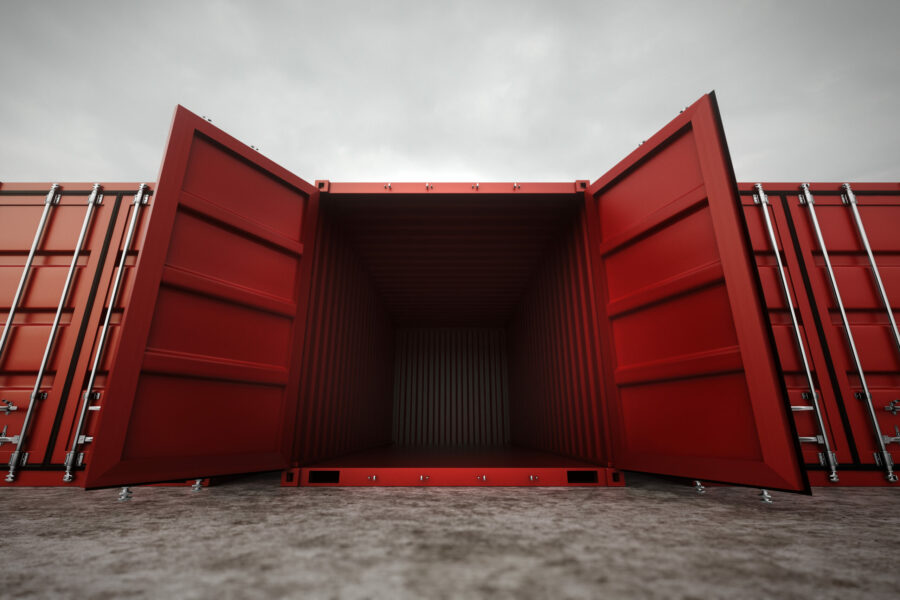
From the Blog
You may also like…
Technology Transforming the Construction Landscape: Key Trends to Watch
The construction industry is constantly evolving, and staying up to date with the latest trends is essential for construction companies, especially for home builders, modular builders, and remodelers with small to medium-sized businesses. Embracing technology can...
Late Payment Solutions for Construction Companies
As a construction company, getting paid on time is crucial to the success of your business. Unfortunately, it is not uncommon for clients to fall behind on their payments, which can create financial strain and disrupt your workflow. If you are dealing with a client...
Scheduling your Construction Crew with Estimator360
Are you tired of constantly dealing with scheduling conflicts and disorganized construction schedules? Look no further than Estimator360, the best construction scheduling software on the market. With our software, you can easily manage your construction projects,...




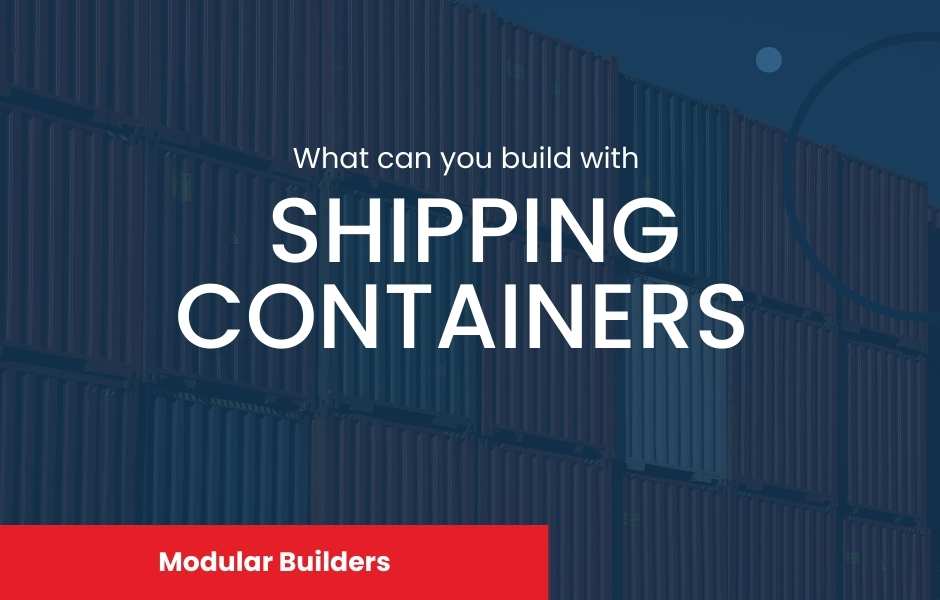

0 Comments